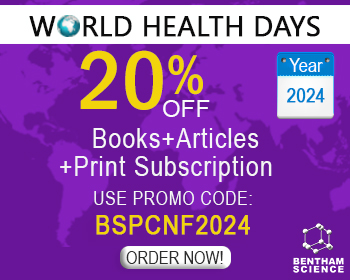Abstract
Significant metabolic changes occur in inflammation to respond to the new energetic needs of cells. Mitochondria are addressed not only to produce ATP, but also to supply substrates, such citrate, to produce pro-inflammatory molecules. In this context, most of the citrate is diverted from Krebs cycle and channeled into the “citrate pathway” leading to the increase in the export of citrate into cytosol by the Mitochondrial Citrate Carrier (CIC) followed by its cleavage into acetyl-CoA and oxaloacetate by ATP Citrate Lyase (ACLY). Acetyl- CoA is used to produce PGE2 and oxaloacetate to make NADPH needed for NO and ROS production. In addition, cytosolic citrate also provides precursors for itaconate synthesis. Citrate- derived itaconate acts as a negative regulator of inflammation by modulating the synthesis of the inflammatory mediators. Inhibition of CIC or ACLY by different synthetic and natural molecules results in the reduction of NO, ROS and PGE2 levels suggesting that the citrate pathway can be a new target to be addressed in inflammation. Beneficial effects can be obtained also in the oxidative stress and inflammatory conditions observed in Down syndrome.
Keywords: Citrate pathway, mitochondrial citrate carrier, ATP citrate lyase, inflammation, inhibition, ROS, NO, PGE2.
[http://dx.doi.org/10.1007/s002960000067] [PMID: 11149655]
[http://dx.doi.org/10.1038/nature11862] [PMID: 23325217]
[http://dx.doi.org/10.1016/S0197-4580(00)00124-X] [PMID: 10858586]
[http://dx.doi.org/10.1186/1741-7007-12-34] [PMID: 24884669]
[http://dx.doi.org/10.1042/BJ20081386] [PMID: 19061483]
[http://dx.doi.org/10.1101/gad.2010510] [PMID: 21159812]
[http://dx.doi.org/10.1016/j.jtbi.2008.09.037] [PMID: 19007794]
[http://dx.doi.org/10.1515/hsz-2013-0271] [PMID: 24445237]
[http://dx.doi.org/10.1002/1873-3468.12744] [PMID: 28685841]
[http://dx.doi.org/10.1515/hsz-2016-0260] [PMID: 27727142]
[http://dx.doi.org/10.1016/j.immuni.2015.02.005] [PMID: 25786174]
[http://dx.doi.org/10.1038/nature11986] [PMID: 23535595]
[http://dx.doi.org/10.1042/BJ20111275] [PMID: 21787310]
[http://dx.doi.org/10.1016/j.bbrc.2013.09.037] [PMID: 24051091]
[http://dx.doi.org/10.1016/j.bbagrm.2014.07.013] [PMID: 25072865]
[http://dx.doi.org/10.1186/1471-2172-8-1] [PMID: 17222336]
[http://dx.doi.org/10.1038/ni.3838] [PMID: 28920951]
[http://dx.doi.org/10.1016/j.bbrc.2007.02.114] [PMID: 17350599]
[http://dx.doi.org/10.1038/emm.2002.9] [PMID: 11989980]
[http://dx.doi.org/10.1016/j.coi.2003.12.001] [PMID: 14734109]
[http://dx.doi.org/10.1016/j.bcp.2012.05.005] [PMID: 22587816]
[http://dx.doi.org/10.1124/mol.113.089573] [PMID: 24170779]
[http://dx.doi.org/10.1016/j.clim.2006.01.016] [PMID: 16540375]
[http://dx.doi.org/10.4049/jimmunol.1602072] [PMID: 28298525]
[http://dx.doi.org/10.1038/ni.2833] [PMID: 24562310]
[http://dx.doi.org/10.1038/ni.3532] [PMID: 27478939]
[http://dx.doi.org/10.1126/scisignal.297pe76] [PMID: 19920250]
[http://dx.doi.org/10.1038/ncomms4479] [PMID: 24632940]
[http://dx.doi.org/10.3389/fimmu.2016.00696] [PMID: 28194150]
[http://dx.doi.org/10.1016/j.bbabio.2015.04.009] [PMID: 25917893]
[http://dx.doi.org/10.7554/eLife.11612] [PMID: 26894960]
[http://dx.doi.org/10.1073/pnas.1218599110] [PMID: 23610393]
[http://dx.doi.org/10.1111/imm.12659] [PMID: 27502741]
[http://dx.doi.org/10.1042/bj3340113] [PMID: 9693110]
[http://dx.doi.org/10.1021/jm2005805] [PMID: 21726077]
[http://dx.doi.org/10.1016/j.immuni.2015.02.017] [PMID: 25786167]
[http://dx.doi.org/10.1042/BJ20101908] [PMID: 21338338]
[http://dx.doi.org/10.1124/mol.109.058750] [PMID: 19843634]
[http://dx.doi.org/10.1111/j.1432-1033.1972.tb01801.x] [PMID: 5025933]
[http://dx.doi.org/10.1016/0006-291X(80)91503-X] [PMID: 7470147]
[http://dx.doi.org/10.1023/A:1020532500749] [PMID: 10206475]
[http://dx.doi.org/10.1074/jbc.M611268200] [PMID: 17400551]
[http://dx.doi.org/10.1007/s00018-013-1389-y] [PMID: 23800987]
[http://dx.doi.org/10.1007/s10863-008-9187-1] [PMID: 19002576]
[http://dx.doi.org/10.1104/pp.120.3.841] [PMID: 10398720]
[http://dx.doi.org/10.1007/s10545-014-9708-5] [PMID: 24797559]
[http://dx.doi.org/10.3233/JND-140021] [PMID: 26870663]
[http://dx.doi.org/10.1136/jmedgenet-2012-101485] [PMID: 23393310]
[http://dx.doi.org/10.1016/j.febslet.2009.10.063] [PMID: 19861126]
[http://dx.doi.org/10.1016/j.bcp.2015.11.019] [PMID: 26616220]
[http://dx.doi.org/10.1016/j.bbapap.2010.04.008] [PMID: 20433957]
[PMID: 20686672]
[http://dx.doi.org/10.14348/molcells.2018.0241] [PMID: 30078231]
[http://dx.doi.org/10.18632/oncotarget.714] [PMID: 23100451]
[http://dx.doi.org/10.1007/BF02533638] [PMID: 16191]
[http://dx.doi.org/10.1042/bj2720181] [PMID: 2176080]
[http://dx.doi.org/10.1093/ajcn/30.5.777] [PMID: 857644]
[http://dx.doi.org/10.1158/0008-5472.CAN-11-4112] [PMID: 22787121]
[http://dx.doi.org/10.1007/s11883-016-0611-4] [PMID: 27663902]
[http://dx.doi.org/10.1194/jlr.M030528] [PMID: 23118444]
[http://dx.doi.org/10.1002/ajmg.a.34114] [PMID: 21739598]
[http://dx.doi.org/10.1016/j.bbrc.2012.04.144] [PMID: 22575446]
[http://dx.doi.org/10.1107/S2059798317009871] [PMID: 28777081]



























